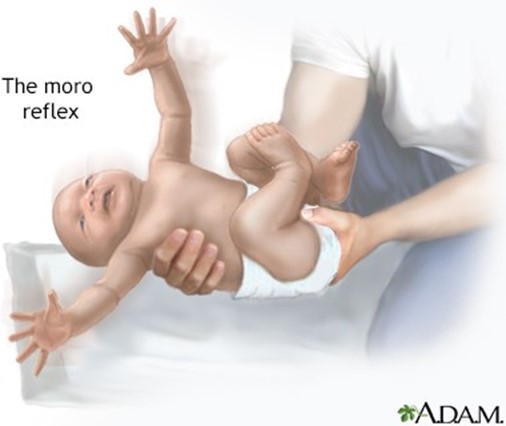A nurse is caring for a newborn who was delivered by vacuum extraction and has swelling on his head that crosses the suture line. The newborn's mother asks about the swelling on her newborn's head. Which of the following responses should the nurse make?
"This is a Mongolian spot, which is found on many newborns.".
"This is a caput succedaneum, which is a collection of fluid from pressure of the vacuum extractor.".
"This is erythema toxicum, which is a transient allergic reaction that causes edema in the skin.".
"This is a cephalhematoma, which will resolve on its own in 3 to 5 days.".
The Correct Answer is B
"This is a caput succedaneum, which is a collection of fluid from the pressure of the vacuum extractor.”.
Choice A rationale:
A Mongolian spot is a benign, flat, bluish-gray pigmented area often found on the sacral or gluteal area of some newborns with darker skin tones. It is not related to the swelling on the newborn's head caused by vacuum extraction.
Choice B rationale:
A caput succedaneum is a localized swelling on the baby's scalp that occurs due to pressure from the vacuum extractor during delivery. It is typically soft and may cross the suture lines. This explanation accurately describes the swelling the baby has on his head.
Choice C rationale:
Erythema toxicum is a common rash that appears as small red bumps with white or yellow centers. It is a benign and self-resolving condition that does not cause swelling on the head or involve the suture lines.
Choice D rationale:
A cephalhematoma is a collection of blood between the skull and the periosteum that does not cross the suture lines. It is caused by trauma during birth and may take weeks to months to resolve. This does not match the description of the swelling caused by vacuum extraction.
Nursing Test Bank
Naxlex Comprehensive Predictor Exams
Related Questions
Correct Answer is ["C","E"]
Explanation
Choice A rationale:
Washing the penis with warm water and mild soap each day is not an appropriate statement regarding circumcision care with a Plastibell device. Keeping the area clean is essential, but soap may irritate the wound, and frequent washing can disrupt the healing process.
Choice B rationale:
Ensuring a loose diaper in the front is not directly related to circumcision care with a Plastibell device. It may be relevant for comfort, but it does not address specific care for the circumcision site.
Choice C rationale:
This is a correct statement indicating understanding of circumcision care with the Plastibell device. The plastic ring is expected to fall off on its own within a week, and this is a normal part of the healing process.
Choice D rationale:
Applying petroleum jelly to the penis during diaper changes is not recommended for circumcision care with a Plastibell device. The petroleum jelly can interfere with wound healing and should be avoided.
Choice E rationale:
This is also a correct statement indicating understanding of circumcision care. If bleeding occurs after the Plastibell has fallen off, it could be a sign of a complication, and the doctor should be notified promptly.
Correct Answer is ["A"]
Explanation
Choice A rationale:

The Moro reflex is a normal finding in newborns, including those born post-term. It is a primitive reflex that should be present and indicates a healthy neurological system.
Choice B rationale:
Vernix, a protective white substance that coats the skin in utero, is typically absent or minimal in post-term newborns due to its decreased production as gestation progresses. Therefore, it would not be expected in a post-term infant.
Choice C rationale:
Lanugo, the fine hair covering a newborn's body, is usually present in greater amounts in preterm infants. By the time a newborn is post-term, lanugo is typically sparse or absent, making it an unlikely finding.
Choice D rationale:
This maneuver assesses the flexibility of the newborn's joints. Post-term infants tend to have reduced flexibility and increased muscle tone, making this maneuver more difficult or restricted in this population.
Whether you are a student looking to ace your exams or a practicing nurse seeking to enhance your expertise , our nursing education contents will empower you with the confidence and competence to make a difference in the lives of patients and become a respected leader in the healthcare field.
Visit Naxlex, invest in your future and unlock endless possibilities with our unparalleled nursing education contents today
Report Wrong Answer on the Current Question
Do you disagree with the answer? If yes, what is your expected answer? Explain.
Kindly be descriptive with the issue you are facing.
